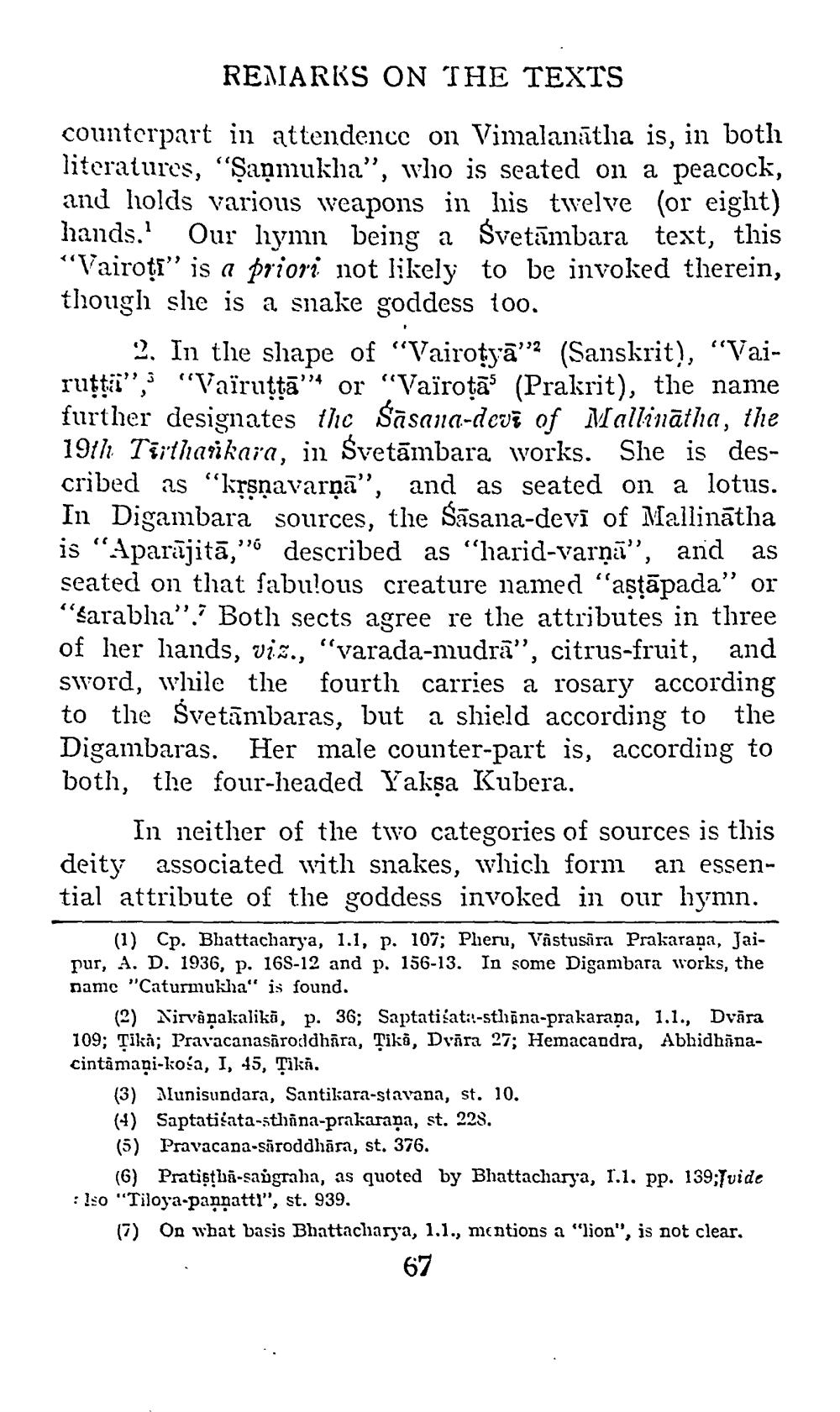________________
REMARKS ON THE TEXTS
counterpart in attendence on Vimalanātha is, in both literatures, "Şanmukha", who is seated on a peacock, and holds various weapons in his twelve (or eight) hands.' Our hymn being a Svetambara text, this "Vairoti" is a priori not likely to be invoked therein, though she is a snake goddess too.
3
2. In the shape of "Vairotyā" (Sanskrit), "Vairuṭṭā”, “Vaïruṭṭā" or "Vaïrota (Prakrit), the name further designates the Sasana-devi of Mallinātha, the 19th Tīrthankara, in Śvetāmbara works. She is described as "kṛṣṇavarṇā", and as seated on a lotus. In Digambara sources, the Sasana-devi of Mallinatha is "Aparajita," ," described as "harid-varna", and as seated on that fabulous creature named "aṣṭāpada" or "Sarabha". Both sects agree re the attributes in three of her hands, viz., "varada-mudra", citrus-fruit, and sword, while the fourth carries a rosary according to the Svetambaras, but a shield according to the Digambaras. Her male counter-part is, according to both, the four-headed Yakṣa Kubera.
In neither of the two categories of sources is this deity associated with snakes, which form an essential attribute of the goddess invoked in our hymn.
(1) Cp. Bhattacharya, 1.1, p. 107; Pheru, Vastusara Prakaraṇa, Jaipur, A. D. 1936, p. 168-12 and p. 156-13. In some Digambara works, the name "Caturmukha" is found.
(2) Nirvaṇakalikō, p. 36; Saptatiśata-sthāna-prakarapa, 1.1., Dvāra 109; Tika; Pravacanas roddhāra, Tikā, Dvāra 27; Hemacandra, Abhidhanacintamani-kośa, I, 45, Țikā.
(3) Munisundara, Santikara-stavana, st. 10.
(4) Saptatisata-sthina-prakaraṇa, st. 228.
(5) Pravacana-saroddhāra, st. 376.
(6) Pratistha-sangraha, as quoted by Bhattacharya, I.1. pp. 139; vide Iso "Tiloya-pannatti", st. 939.
(7) On what basis Bhattacharya, 1.1., mentions a "lion", is not clear.
67




